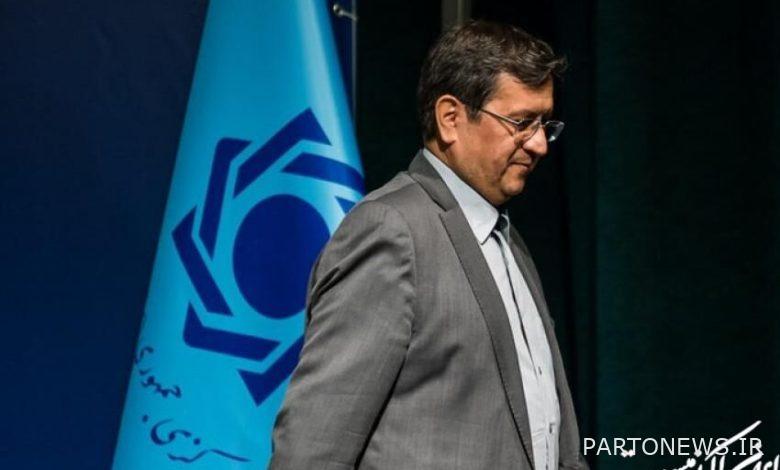The role of Abdul Nasser Hemmati in blocking the country’s foreign exchange resources

According to the Iran Economist, sanctions expert Massoud Barati wrote about Russia’s efforts to circumvent US banking sanctions on the payment of Russian gas exports to the ruble: “Against Russia alone, the United States is designing a patrol that Iran has experienced creating An escrow account for the storage of Russian oil and gas revenues in a US-controlled account.
Barati added: “The last experience was related to Iran in selling gas and electricity to Iraq, which unfortunately Mr. Hemmati (Governor of the Central Bank in the previous government) went and accepted.”
Explaining Hemmati’s service to US sanctions, Barati said: “A screw account is an account whose withdrawal depends on the fulfillment of the conditions specified at the time of opening the account.” A type of conditional account. This phenomenon entered the structure of sanctions against Iran in 2012.
NDAA 2012 banned the sale of Iranian oil, except as permitted by the United States. Section 1245 of the law was related to this issue. Subsection D details the embargo, and D3 deals with the transaction. This embargo was implemented from July 1991.
Initially, the transactions were not limited, so after the implementation of this law, Iran, in order to prevent the blockage of money and freedom of action in its future use, turned to buying gold and transferring it to Iran. The United States, which aims to reduce Iran’s access to oil revenues, will amend the sanctions in the summer of 1991.
Section D3 is amended in the Iran Threat Reduction Law TRA2012, and from here the screw account enters the issue of sanctions against Iran. What David Cohen refers to as the “locking” of Iranian currencies.
According to this amendment, a special account will be created in the country of the licensed buyer of Iranian oil and oil money will be stored in local currency. The money is under US Treasury control, and Iran can use it for bilateral trade, limited to non-sanctioned goods.
Transfer to a third country is prohibited except in cases related to humanitarian trade (food, medicine and medical equipment), which is also prohibited for individuals and entities sanctioned under Executive Order 13224, which are labeled SDGT.
This framework addressed the US need to zero physical sales of Iranian oil and shifted the focus of sanctions to the consumption of oil revenues. By doing so, the shock of eliminating Iranian oil could be better managed.
On the Iranian side, this reform was also accepted because it had accepted the canalization of oil sales from the beginning. Of course, the view that sanctions are a temporary phenomenon and will be lifted in the near future was also influential in this acceptance.
Oil sales under this framework led to an increase in oil revenue depots for Iranian oil buyers. Because Iran did not have an equal trade balance in all these countries. And buying was also limited to consumer and authorized goods.
This issue was not given much attention in the negotiations leading up to Barjam. To the extent that in the text of Borjam, despite the fact that the temporary suspension was mentioned about sub-sections D1, D2, but sub-section D3 remained silent.
And Iran’s oil money continued to be spent under US Treasury. Due to the reduction in the scope of sanctions, Iran was more open to consumption, but this structure, along with the structure of risk-based sanctions, prevented the free use of Iran’s oil revenues.
After the withdrawal of the United States from Borjam, the restrictions increased and Iranian oil money was deposited and blocked in these accounts more quickly. The boycott of the Central Bank under Executive Order 13224 also exacerbated this situation.
Instex, which was Europe’s initiative to compensate for the US withdrawal from Borjam, followed the same framework, except that Europe did not dare to buy oil from Iran.
The latest case concerns the acceptance of this type of account in Iraq in the summer of 1998. In July 1998, the Central Bank of Iran agreed that money from the sale of Iranian gas and electricity to Iraq would be deposited in an account with the Iraqi TBI Bank, which had been impossible to use until last year.
The United States is now seeking to implement this framework for the sale of Russian gas and oil in order to have sufficient control over Russia’s revenues. In recent days, when Europe needs Iran’s energy, it is unlikely that it will use this framework to reach an agreement with Iran with the permission of the United States. In the method of paying for Russian gas exports in rubles, the buyer’s payment obligation is finalized only at the stage of charging the ruble account in Gazprombank, and because European banks withdraw from this process, sanctions do not prevent Russia from accessing gas money.

